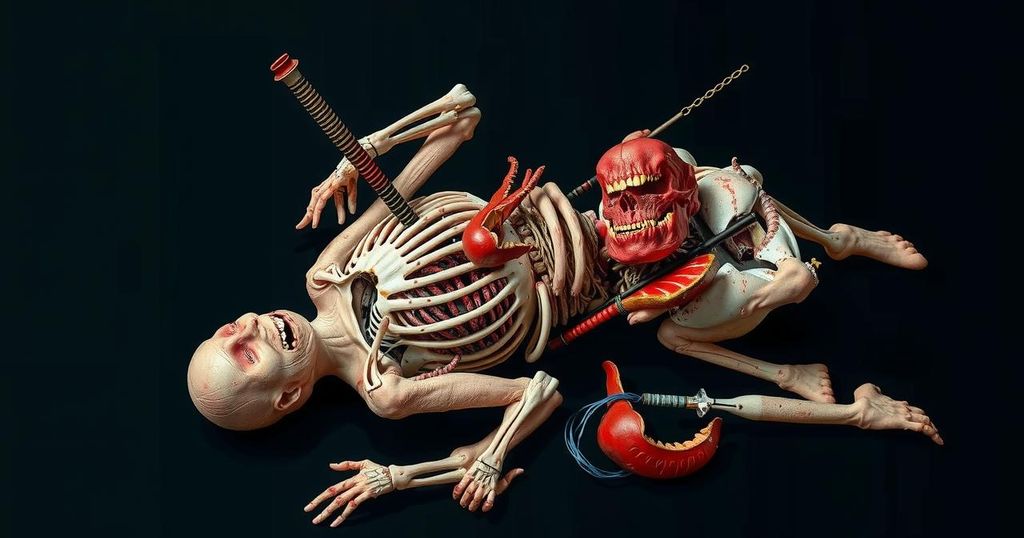Haunting Agency: The Rise of Severed Hands in Contemporary Art
Contemporary artists like Paloma Proudfoot and Charlotte Edey are exploring themes of femininity and agency through depictions of severed hands. Works such as Proudfoot’s “Threaded” and Edey’s “Freshwater” challenge historical objectification and assert women’s power in art. This trend redefines representations of women, transforming hands into symbols of control and creativity.
In contemporary art, disembodied hands, notably in Paloma Proudfoot’s glazed ceramic sculpture “Threaded” (2024), probe the relationship between femininity and agency. The hand, adorned with cherry-red nails, entwines itself around a spinal cord, symbolizing manipulation and patriarchal oversight. Proudfoot’s exploration connects to historical practices of hypnotherapy and hysteria treatment, where women are portrayed as subjects of control, highlighting the ongoing critique of agency in female representation. Charlotte Edey’s works depict hands as dynamic forces, unrestricted by physical constraints. Her tapestry “Freshwater” (2018) showcases a divine hand looming over a barren landscape, embodying the potential to manipulate and revive. Edey’s vision is rooted in reimagining not only the aesthetics but also the power dynamics articulated through feminine imagery, unveiling a more proactive identity for women in art. Historically, portrayals of disembodied female body parts often signify objectification. Gustave Courbet’s 1866 painting “The Origin of the World” presents a juxtaposition of reverence and disempowerment, reinforcing the notion of the passive female figure. Yet, the transition we see in modern artistry conveys a potent narrative shift, where hands become symbols of control and assertiveness, asserting a voice long silenced by traditional representations. Amid this artistic evolution, the use of severed hands serves as a metaphorical reclamation of agency. These representations challenge past depersonalizations and call attention to the active role of women’s expressions of power and autonomy. Artists are redefining the narrative by depicting hands that inspire movement and transformation within a visual language traditionally dominated by male gaze.
Contemporary artists are increasingly engaging with the themes of agency and femininity through bold representations of severed hands. By drawing from historical contexts, such as 19th-century scientific practices tied to the control of women, pieces like Proudfoot’s “Threaded” and Edey’s “Freshwater” reflect a cultural shift that emphasizes women’s empowerment within visual art. This evolution not only amplifies women’s voices but also redefines their image radically in modern culture.
The rise of disembodied hands in contemporary art signals a vital exploration of female agency and identity. Artists like Paloma Proudfoot and Charlotte Edey reclaim power through theirwork, challenging traditional portrayals that often strip women of their agency. By elevating hands as symbols of control, they encourage a new dialogue around femininity, pushing against historical boundaries and advocating for a more dynamic representation of women’s roles in art and society.
Original Source: www.nytimes.com




Post Comment